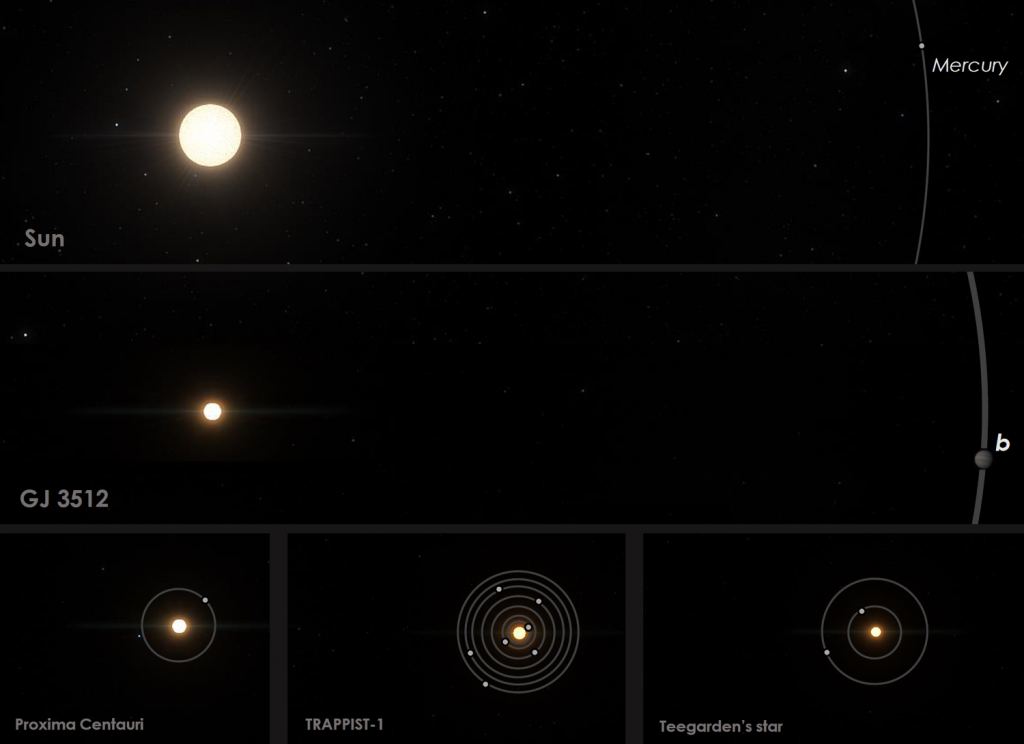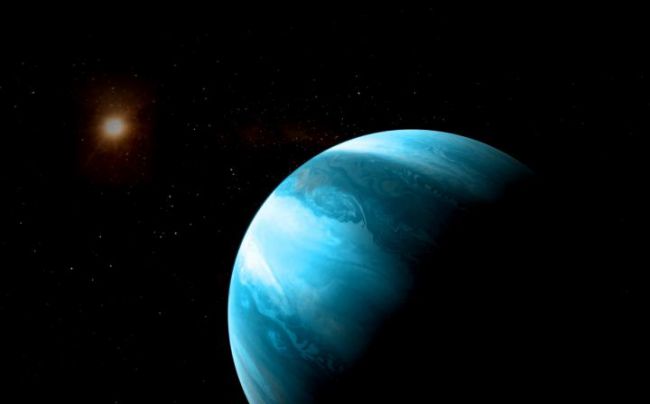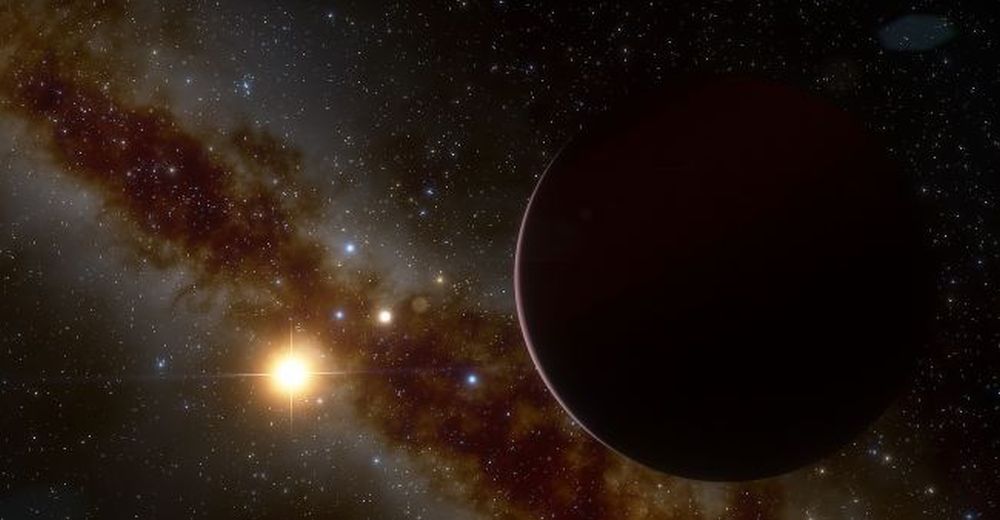Thanks to the Kepler mission and other efforts to find exoplanets, we’ve learned a lot about the exoplanet population. We know that we’re likely to find super-Earths and Neptune-mass exoplanets orbiting low-mass stars, while larger planets are found around more massive stars. This lines up well with the core accretion theory of planetary formation.
But not all of our observations comply with that theory. The discovery of a Jupiter-like planet orbiting a small red dwarf means our understanding of planetary formation might not be as clear as we thought. A second theory of planetary formation, called the disk instability theory, might explain this surprising discovery.
The red dwarf star is called GJ 3512 and it’s about 31 light years away from us in Ursa Major. GJ 3512 is 0.12 times the mass of our Sun, and the planet, GJ 3512b, is 0.46 times the mass of Jupiter, at minimum. That means that the star is only about 250 times more massive than the planet. Not only that, but it’s only about 0.3 AU from the star.
Compare that to our Solar System, where the Sun is over 1000 times more massive than the largest planet, Jupiter. Those numbers don’t add up when it comes to the core-accretion theory.
The core accretion theory is the most widely-accepted theory for planetary formation. Core accretion happens as small solid particles collide and coagulate to form larger bodies. Over long periods of time, that builds planets. There’s a limit to how it works though.

Once a solid core up to about 10-20 times the size of the Earth forms, it’s massive enough to accrete gas, which forms an envelope or atmosphere around the solid core. A key is that core accretion works differently depending on the distance from the star.
In an inner solar system, the star has taken up much of the available material, and smaller planets form, like Earth. Earth has a relatively small atmosphere, too. In an outer solar system, beyond what’s called the frost line, there’s much more material from planets to form from, though the material is less dense. That’s how we end up with gas giants with voluminous atmospheres in the outer Solar System.
But in the case of GJ 3512, the researchers found some contradictions with the core accretion explanation. First of all, the reason stars are low-mass is because the entire disk they form from has less material. Stars like GJ 3512 simply ran out of material before they could get very large. By the same token, there’s less material left in the protoplanetary disk to form large planets.

In their paper, they say that “Formation of a gas giant <GJ 3512b> in this way requires building up a large planetary core of at least 5 Earth masses.” They say that that cannot happen around such a low-mass star.
This new star system seems to rule out the core accretion theory as an explanation. The planet’s just too massive compared to the star. But there’s another theory called the disk instability theory.
When a young star is born into fusion, it’s surrounded by a rotating protoplanetary disc of material that’s left over from the formation of the star. Planets form from that material. The disk instability theory says that the rotating disc of material can cool rapidly. That rapid cooling can cause the material to coagulate into planet-size chunks, that can collapse under their own gravity to form gas giants, skipping the core accretion process.
While core accretion would take a long time, disk instability could create large planets in a much shorter time. That could explain finding large planets so close to small stars, as in GJ 3512’s case.
The scientists behind this work found other oddities in this system, too. They say that there may be a third planet in the system—also a gas giant—that influenced GJ 3512b, causing its elongated orbit. That planet’s presence is inferred through the unusual orbit of GJ 3512b, and was not observed. The team behind the study say that the second planet was likely ejected from the system and is now a rogue planet.
It’ll take more study, with more powerful instruments, to understand this system better. According to the authors, it’s a great opportunity to fine tune our theories of planetary formation. As they say in the paper’s conclusion, “GJ 3512 a very promising system because it may be fully characterized and thus continue to place stringent constraints on accretion and migration processes, as well as on the efficiency of planet formation in protoplanetary discs, and the disc-to-star mass ratios.
An international team of researchers in the CARMENES (Calar Alto high-Resolution search for M dwarfs with Exoearths with Near-infrared and optical Echelle Spectrographs) consortium did this work. That consortium searches for red dwarfs, the most common type of star in the galaxy, in hopes of finding low-mass planets in their habitable zones. Not only does CARMENES generate a data set for understanding red dwarf stars, but by finding Earth-size planets, it will provide a rich set of follow-up targets for future study.
More:
- Press Release: Giant exoplanet around tiny star challenges understanding of how planets form
- Research Paper: A giant exoplanet orbiting a very-low-mass star challenges planet formation models
- PlanetHunters.org: What Do We Really Understand About Planetary Formation?
- Research Paper: PLANETARY FORMATION SCENARIOS REVISTIED: CORE-ACCRETION VERSUS DISK INSTABILITY
- CARMENES

